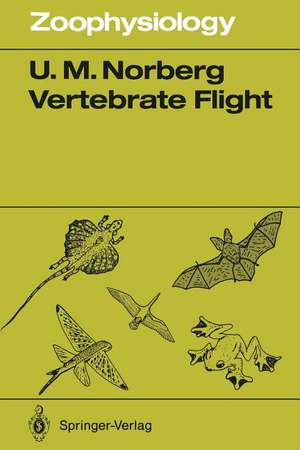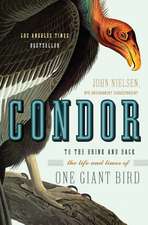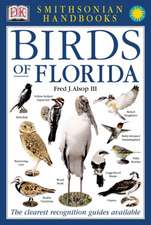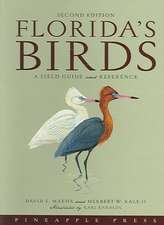Vertebrate Flight: Mechanics, Physiology, Morphology, Ecology and Evolution: Zoophysiology, cartea 27
Autor Ulla M. Norbergen Limba Engleză Paperback – 8 dec 2011
Din seria Zoophysiology
- 15%
 Preț: 647.92 lei
Preț: 647.92 lei - 15%
 Preț: 638.76 lei
Preț: 638.76 lei - 15%
 Preț: 638.24 lei
Preț: 638.24 lei - 15%
 Preț: 641.38 lei
Preț: 641.38 lei - 15%
 Preț: 634.82 lei
Preț: 634.82 lei -
 Preț: 386.61 lei
Preț: 386.61 lei - 15%
 Preț: 636.94 lei
Preț: 636.94 lei - 15%
 Preț: 640.88 lei
Preț: 640.88 lei - 15%
 Preț: 635.47 lei
Preț: 635.47 lei - 15%
 Preț: 637.78 lei
Preț: 637.78 lei - 15%
 Preț: 640.88 lei
Preț: 640.88 lei -
 Preț: 386.61 lei
Preț: 386.61 lei - 15%
 Preț: 637.78 lei
Preț: 637.78 lei - 15%
 Preț: 638.24 lei
Preț: 638.24 lei - 15%
 Preț: 642.83 lei
Preț: 642.83 lei - 15%
 Preț: 634.68 lei
Preț: 634.68 lei - 15%
 Preț: 642.83 lei
Preț: 642.83 lei - 15%
 Preț: 639.41 lei
Preț: 639.41 lei - 15%
 Preț: 638.43 lei
Preț: 638.43 lei - 15%
 Preț: 651.34 lei
Preț: 651.34 lei - 15%
 Preț: 638.57 lei
Preț: 638.57 lei - 15%
 Preț: 637.46 lei
Preț: 637.46 lei - 15%
 Preț: 637.59 lei
Preț: 637.59 lei - 15%
 Preț: 641.53 lei
Preț: 641.53 lei - 15%
 Preț: 636.80 lei
Preț: 636.80 lei -
 Preț: 386.22 lei
Preț: 386.22 lei - 15%
 Preț: 632.55 lei
Preț: 632.55 lei - 15%
 Preț: 695.19 lei
Preț: 695.19 lei -
 Preț: 401.24 lei
Preț: 401.24 lei - 18%
 Preț: 942.01 lei
Preț: 942.01 lei - 18%
 Preț: 945.30 lei
Preț: 945.30 lei - 15%
 Preț: 652.17 lei
Preț: 652.17 lei - 15%
 Preț: 632.70 lei
Preț: 632.70 lei - 15%
 Preț: 640.71 lei
Preț: 640.71 lei - 15%
 Preț: 644.30 lei
Preț: 644.30 lei - 15%
 Preț: 642.68 lei
Preț: 642.68 lei
Preț: 999.60 lei
Preț vechi: 1219.02 lei
-18% Nou
Puncte Express: 1499
Preț estimativ în valută:
191.27€ • 199.70$ • 158.30£
191.27€ • 199.70$ • 158.30£
Carte tipărită la comandă
Livrare economică 04-18 aprilie
Preluare comenzi: 021 569.72.76
Specificații
ISBN-13: 9783642838507
ISBN-10: 3642838502
Pagini: 308
Ilustrații: XIV, 291 p.
Dimensiuni: 155 x 235 x 22 mm
Greutate: 0.44 kg
Ediția:Softcover reprint of the original 1st ed. 1990
Editura: Springer Berlin, Heidelberg
Colecția Springer
Seria Zoophysiology
Locul publicării:Berlin, Heidelberg, Germany
ISBN-10: 3642838502
Pagini: 308
Ilustrații: XIV, 291 p.
Dimensiuni: 155 x 235 x 22 mm
Greutate: 0.44 kg
Ediția:Softcover reprint of the original 1st ed. 1990
Editura: Springer Berlin, Heidelberg
Colecția Springer
Seria Zoophysiology
Locul publicării:Berlin, Heidelberg, Germany
Public țintă
ResearchCuprins
1. Introduction.- 1.1 Gliders.- 1.2 Active Flyers.- 1.3 Outline of the Book.- 2. Basic Aerodynamics.- 2.1 Introduction.- 2.2 The Flow Around an Aerofoil.- 2.3 Blade-Element and Momentum Jet Theories.- 2.4 Vortex Theory of Flight.- 3. Physiology of Flight.- 3.1 Introduction.- 3.2 Energy and Mechanical Efficiency.- 3.3 Metabolic Rates.- 3.4 Oxygen Uptake.- 3.5 Altitudinal Changes.- 3.6 Estimates for Cost of Flight.- 3.7 Flight Duration, Flight Range and Cost of Transport.- 4. Morphological Flight Parameters.- 4.1 Introduction.- 4.2 Lenghts, Areas, Masses.- 4.3 Wing Shape.- 4.4 Weis-Fogh’s and Ellington’s Shape Parameters.- 5. Gliding Flight.- 5.1 Introduction.- 5.2 Gliding Performance.- 5.3 Effects of Change in Wingspan on Gliding Performance.- 5.4 Lifting Line Theory.- 5.5 Flap-Gliding.- 5.6 Stability and Control of Movements.- 6. Soaring.- 6.1 Introduction.- 6.2 Soaring Methods.- 6.3 Soaring Performance and Flight Morphology.- 6.4 Bats and Pterosaurs.- 7. Migration.- 7.1 Introduction.- 7.2 Orientation and Navigation.- 7.3 Flight Range.- 7.4 Cruising Speed and Flight Time.- 7.5 Effect of Wind.- 7.6 Evolution of Soaring Migration.- 7.7 Formation Flight.- 8. Hovering Flight.- 8.1 Introduction.- 8.2 Kinematics of Hovering.- 8.3 The Rankine-Froude Momentum Theory.- 8.4 Blade-Element Theory.- 8.5 Vortex Theory.- 8.6 Animals with Sustained Hovering.- 8.7 Summary and for Ecologists and Others: Recipes for Power Calculation.- 9. Forward Flight.- 9.1 Introduction.- 9.2 Wing Kinematics.- 9.3 Relative Airspeeds and Forces.- 9.4 Vorticity Action.- 9.5 Power Requirements for Horizontal Forward Flight.- 9.6 Take-Off, Climbing and Landing.- 9.7 Flight Manoeuvres.- 9.8 Energy-Saving Types of Flight.- 9.9 For Ecologists and Others: Recipes for Power Calculation.- 10. Scaling.- 10.1Introduction.- 10.2 Geometric Similarity.- 10.3 Estimated Relationships Between Wing Characteristics and Body Mass.- 10.4 Upper and Lower Size Limits.- 11. Morphological Adaptations for Flight.- 11.1 Introduction.- 11.2 Muscle System.- 11.3 Skeleton System.- 11.4 Feather Structure and Function.- 11.5 Wing Adaptations Enhancing Flight Performance.- 11.6 Tail and Feet.- 12. Flight and Ecology.- 12.1 Introduction.- 12.2 Predictions on Wing Shape and Flight Behaviour.- 12.3 Wing Design in Birds.- 12.4 Wing Shape and Foraging Energetics of Hummingbirds at Different Altitudes.- 12.5 Wing Design of Species in a Pariform Guild.- 12.6 Wing Design in Bats.- 12.7 Wing Design and Echolocation Call Structure in Bats.- 12.8 Evolution of Wing Morphology.- 13. Evolution of Flight.- 13.1 The Major Theories.- 13.2 Transition from Gliding to Flapping Flight, an Aerodynamic Model.- 13.3 The Ground-Running and Jumping Scenario, a Discussion.- 13.4 The Climbing Ability in Proto-Fliers.- 14. Concluding Remarks.- References.










